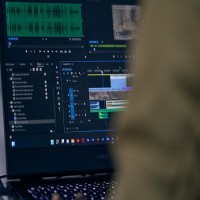20 different types of video cuts. Video cuts, also known as movie cuts or film cuts, are transitions utilized in films and videos to seamlessly integrate various camera shots.
1. Standard Cut:
Transition from one shot to another, typically used for continuity. The standard cut, also known as “Shot-Reverse Shot,” is a familiar and widely used editing technique. It’s a fundamental cut employed in numerous films and productions, seamlessly transitioning between different shots to maintain continuity and convey the conversation or action between characters.
2. Jump Cut:
The abrupt transition among photographs of equal subjects has a jarring effect. Jump cuts derive their name from their characteristic leap forward or backward in a film’s timeline, signifying the passage of time. One notable instance of jump cuts is famously found in Jean-Luc Godard’s debut film “Breathless.”
3. Cross Cut:
Alternating between two separate scenes happening simultaneously. Cross-cut edits offer an effective method to intertwine multiple narratives simultaneously, allowing for a dynamic storytelling approach.
4. Match Cut:
Transition between two shots that share a visual or audio similarity. A match cut serves as an editing technique that provides context and maintains continuity within a scene.
5. L Cut (Split Edit):
Audio from the preceding shot continues into the following shot before the video cuts. “These editing styles prioritize fluidity,” explains editor Cody Liesinger. “When editing is overly conspicuous, it can disrupt the narrative’s flow, resulting in a disjointed viewing experience.”
6. J Cut (Split Edit):
Audio from the following shot is heard before the video cuts to that shot. The J cut serves as the inverse of the L cut.
7. Fade In/Fade Out:
Gradual increase or decrease in the visibility or audibility of a shot. A visual effect is employed to signify a shift in both location and time.
8. Dissolve:
The Transition between two shots by gradually blending them.
9. Wipe:
One shot replaces another by moving across the screen to reveal the new shot. A wipe transition involves an animation, often digital, that smoothly “wipes” the preceding scene off the screen to reveal the subsequent scene.
10. Swipe:
Similar to a wipe but with a vertical or horizontal motion. A simple technique to seamlessly connect two distinct shots is by smoothly panning out from the first shot and then panning back into the second shot.
11. Iris In/Iris Out:
A circular or oval mask expands or contracts to reveal or conceal the shot. In the iris transition, the film camera gradually closes or opens its aperture, resulting in the visible image on the film shrinking or expanding within a circular frame, bordered by black.
12. Flip:
The transition where one shot flips to reveal the next shot. The process involves generating a mirrored reflection of the original footage.
13. Zoom:
Transition where the camera zooms in or out to change the shot.
14. Slide:
The transition is where one shot slides off-screen to reveal the next shot.
15. Luma Key:
Transition based on the luminance (brightness) values of the shots. This technique is primarily beneficial for static images, such as logos against a black backdrop, or digitally created graphics.
16. Morph Cut:
Seamless transition between two shots, often used for removing jump cuts. A morph cut offers a more efficient method for removing video frames during editing.
17. Stencil:
The transition where one shot is revealed through a stencil-shaped mask.
18. Ghosting:
The transition where the previous shot remains visible as a faint overlay while transitioning to the next shot.
19. Pixelation:
The transition where one shot pixelates or blurs to reveal the next shot.
20. Whip Pan:
Rapid horizontal or vertical movement of the camera to transition between shots.
Video cuts refer to the editing technique of transitioning from one video clip to another, typically to change scenes, viewpoints, or perspectives in a video production. 20 different types of video cuts

How To Crop Video in Premiere Pro - Digital AniViPractice
[…] these values by clicking or typing in specific coordinates to move your video or move the video clip directly on the Program Monitor window where you […]